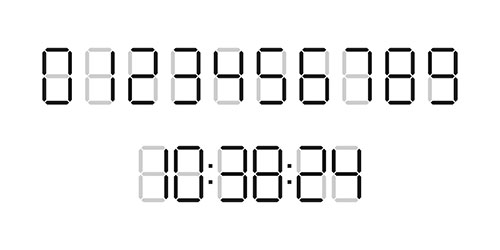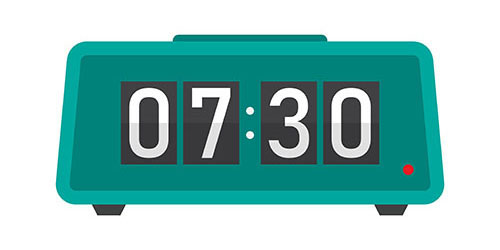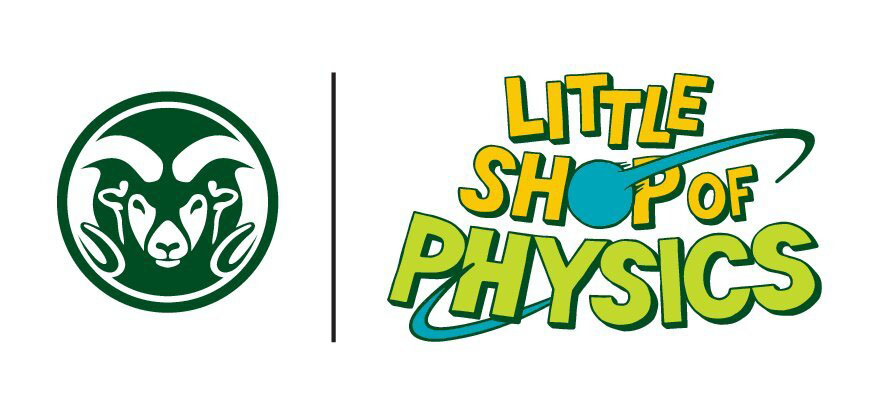Multiplexing Messages
Experimenting with wave properties of light
Total Time: 30 - 45 minutes
Audience: Middle School Science Teachers
Education Level: Grades 5 - 9
Content Area: Waves
Educational Topic: Waves, features of waves, wave terminology
Objectives: Students will be introduced to how multiplexing works and combine what they’ve learned about waves to make an educated guess as to how multiplexed signals are eventually separated out.
Key Question: How does using different wavelengths of light allow multiple messages to be sent in a single channel at the same time?

Next Generation Science Standards
MS-PS4-2. Develop and use a model to describe how waves are reflected, absorbed, or transmitted through various materials.
CCC: Influence of Science, Engineering, and Technology on Society and the Natural World ▪ Technologies extend the measurement, exploration, modeling, and computational capacity of scientific investigations. (MS-PS4-3)
CCC: Science is a Human Endeavor ▪ Advances in technology influence the progress of science and science has influenced advances in technology. (MS-PS4-3)
SEPs: Scientific Knowledge is Based on Empirical Evidence ▪ Scientific knowledge is based upon logical and conceptual connections between evidence and explanations. (MS-PS4-1)
Materials
- Experiment Four
- Red/cyan 3D glasses
- Markers, highlighters, or colored pencils tuned to wavelengths transmitted and absorbed by glasses
- Paper
- Seven-segment display symbol samples (below)
Overview: Students start by exploring with the 3D glasses and markers/colored pencils/crayons to find colors that work well for this activity. It’s important to use markers, highlighters, or colored pencils that are tuned to the wavelength of light that each filter transmits.
The right color will “disappear” when viewed through the 3D glasses. Then, students can create “multiplexed messages” — making overlapping letters/numbers with different colors allows you to transmit two different messages on top of each other; you can see one message with the red lens in the 3D glasses, and the other message with the cyan lens. Then students are asked to review what they’ve learned so far and think about how they could separate laser light multiplexed messages in a fiber optic cable.
Teacher’s Guide
Teacher Background
Watch this video from Little Shop of Physics for an overview of the experimental setup and the science behind the phenomenon!
The 3D glasses in the kit each have one red lens and one cyan lens. Red and cyan are complementary colors; red transmits the long-wavelength end of the visible light spectrum, and cyan, the short-wavelength end of the spectrum. Some colors can be seen through one lens but not through the other. The glasses create a 3D effect when two slightly different versions of a given image are printed on the same piece of paper — one version of the image is visible through the red lens, and the other version is visible through the cyan lens. You can make a 3D picture of your class using a free app! (See Assessment/Extension Activities Section for more information!)
But you can also use this property of the glasses to make what we call “multiplexed messages” — two overlying messages or pictures on the same paper.
Key Terms (used or presented after the activities)
- Multiplexing: Multiplexing is a method used by networks to consolidate multiple signals — digital or analog — into a single composite signal that is transported over a common medium, such as a fiber optic cable or radio wave.
Objectives
Students will be introduced to how multiplexing works and combine what they’ve learned about waves to make an educated guess as to how multiplexed signals are eventually separated out.*
*It is important to understand that student goals may be different and unique from the lesson goals. We recommend leaving room for students to set their own goals for each activity.
Before the Experiment
Watch this video from Little Shop of Physics for an overview of the experimental setup and the science behind the phenomenon!
- Ask & Discuss: Fiber optic internet is a light signal sent through a fiber optic cable.
- If you and your neighbors all get internet at your respective homes, and all those internet signals are sent through a single fiber optic cable, how do those signals not get mixed up? How do you get your funny cat videos and your neighbor gets DIY shoelace videos?
- Use the Snowball protocol:
- Students begin in pairs, responding to a discussion question only with a single partner.
- After each person has had a chance to share their ideas, the pair joins another pair, creating a group of four.
- Pairs share their ideas with the pair they just joined.
- Groups of four join together to form groups of eight, and so on, until the whole class is joined up in one large discussion.
- Tell students that the experiment they are about to do will help them explore this idea of multiplexing messages — layering messages in a single channel and separating them out later.
Setting Up

- You’ll need paper, red and blue colored pencils/markers/crayons, and 3D glasses to hand out to the students.
During the Experiment
Collecting Data
- Students make overlapping letters/numbers with different colors allowing them to transmit two different messages on the same piece of paper; you can see one message with the red lens in the 3D glasses, and the other message with the cyan lens. It’s important for them to find markers, highlighters, or colored pencils that are tuned to the wavelength of light that each filter transmits. Here’s an example:

Teacher Tips
- A great way to start any physics related unit is with the STEP UP Careers in Physics lesson. This lesson covers careers one can do with a physics degree, particularly those that help solve societal problems. It helps students assess their personal values in relation to a career in physics, examine profiles of professionals with physics degrees, and envision themselves in a physics career.
- Suggested STEP UP Everyday Actions to incorporate into activity
- When pairing students, try to have male/female partners and invite female students to share their ideas first.
- As you put students into groups, consider having females or students from underrepresented backgrounds take the leadership role.
- Take note of female participation. If they seem to be taking direction and following along, elevate their voice by asking them a question about their experiment.
- Consider using whiteboards so students have time to work through their ideas and brainstorm before saying them out loud.
- As students experiment, roam around the room to listen in on discussion and notice experiment techniques. If needed, stop the class and call over to a certain group that has hit on an important concept.
- ***Consider using the RIP protocol (Research, Instruct, Plan) for lab group visits and conferring.
- ***Consider culturally responsive tools and strategies and/or open-ended reflection questions to help push student thinking, evidence tracking, and connections to their lives. Look for *** below to find suggested places to add.
Conclusion
- After experiencing how the 3D glasses together with the right colored pencils can produce overlapping messages that can be viewed separately, students should answer the question: How does multiplexing allow you to use a single channel for multiple messages simultaneously?
- Use the four-quadrant protocol:
- Divide students into groups of four.
- The teacher posts a question that students must answer with an explanation.
- Students each write their own ideas on a loose piece of paper.
- Then, the papers are all passed to the left.
- Each student silently reads the previous student’s response (and any of the other students’ comments, on iterating rounds of this process).
- Each student writes suggestions directly onto the original copy to help make their peers’ ideas sharper and clearer.
- Repeat the pass-read-edit process until each student gets to read and comment on each others’ ideas. The original author of each statement reads their peers' comments and writes a refined, final statement at the bottom of the paper to turn in.
- Introduce the PQ 23: Making Waves Physics Career and Concept Map and allow students to read through and discuss the careers that use this content. Extend their thinking with research about these careers if time allows.
Student’s Guide
Introduction
Multiplexing is a key innovation in communication technology. When signals are multiplexed, they’re layered over one another in a single channel but are encoded using different wavelengths and so can be separately decoded by devices. This activity is an introduction to what it means to multiplex messages.
Objective: Students will be introduced to how multiplexing works and combine what they’ve learned about waves to make an educated guess as to how multiplexed signals are eventually separated out.
Students: After reading the introduction, what is your essential question or objective for this activity?
Before the Experiment
- Older calculators and digital watches used seven-segment displays to make numbers — each symbol space contained seven segments, each of which could be illuminated or not, depending on what number was desired:
1234567890
You can also use these displays to make some Latin letters:
ABCDEFGHIJLnopsu
Count how many places you see a seven-segment display during the course of your day. Keep track of them! On what kind of devices did you find them? - Discuss: Fiber optic internet is a light signal sent through a fiber optic cable. If you and your neighbors all get internet at your respective homes, and all those internet signals are sent through a single fiber optic cable, how do those signals not get mixed up? How do you get your funny cat videos and your neighbor gets DIY shoelace videos?
Setting Up
- Get paper and red and blue colored pencils from your teacher.
During the Experiment***
Collecting Data
- Making overlapping letters with different colors allows you to transmit two different messages on the same piece of paper; you can see one message with the red lens in the 3D glasses, and the other message with the cyan lens. It’s important to use markers, highlighters, or colored pencils that are tuned to the wavelength of light that each filter transmits.
Conclusion***
- How does multiplexing allow you to use a single channel for multiple messages simultaneously?
- Multiplexing is common in telecommunication systems and computer networks that use laser systems to send light signals over fiber optic cables. Multiple signals can be consolidated and sent in the same cable, because each signal is transmitted in a different wavelength, allowing them to be sorted out again later. How do you think the different wavelengths of laser signals are separated out later? What device might be used to accomplish this? (Think back to some of our earlier experiments!)
- Explore the PQ 23: Making Waves Physics Career and Concept Map. What careers that use this content sound most appealing to you? Why?
Additional Resources
- How Fiber Optics Work
- How Does Light Carry Data?
- How can we send signals without wire or cables?
- Sign up for Physicists To-Go to have a scientist talk to your students.
- STEP UP Women in Physics lesson: Introduces the underrepresentation of women in physics and the role of implicit bias and cultural stereotypes. Helps students examine the conditions for women in physics and discuss gender issues, gendered professions, and personal experience to neutralize the effect of stereotypes and bias.
Assessment/Extension activities** (optional to extend thinking after the lesson)
- Real-world connections:
- A lot of people own household phones and cell phones. Using what you learned, explain how multiple phones use the same cell phone tower.
- Suggestions for drawing, illustrating, and presenting content in creative ways:
- Gather up your whole class for a 3D group photo!
- Using the free app called “MakeIt3D - 3D Camera” you can take two pictures of your class (have everyone stand perfectly still!), the app will overlay them, and the end result really pops! Having students extend their arms toward or away from the camera gives extra depth!
- Create a scavenger hunt/escape room for students using blue and red colors and 3D glasses. Have one team look for clues in blue text and the other team look for clues in the red text.
- Build a seven-segment display.
- Engineering and design challenges connected to the content:
- Imagine you are stranded on a deserted island. How could you use the properties of multiplex messaging and/or light to try and be rescued? Be creative!
- If engineering challenges have a time constraint, students are allowed to keep iterating and developing their ideas outside of class time and continue to participate in the challenge at a later date.
- Watch this Listen to Light video and see what lasers sound like!
**Real-world situations/connections can be used as is, or changed to better fit a student’s own community and cultural context.
Credits

Reviewed by Summer Chrisman, MEd, Tamia Williams, MSt, Chris Irwin
Extensions by Jenna Tempkin
Formatted by Sierra Crandell, MEd, partially funded by Eucalyptus Foundation
PhysicsQuest © 2023 by American Physical Society is licensed under CC BY-NC 4.0
